Physical Address
304 North Cardinal St.
Dorchester Center, MA 02124
Structural mobility and elasticity are characteristics of the upper airway that make injury to these structures infrequent. Skeletal protection is also provided anteriorly by the mandible and sternum and posteriorly by the bony spinal column ( Fig. 1 ). Upper airway injuries are identified in only 0.03% of patients admitted to major trauma centers. These injuries are frequently lethal, which explains their higher reported occurrence in autopsy series. Penetrating mechanisms of injury are more common than blunt mechanisms of injury, the true incidence of which is unknown. Twenty-one percent of patients with upper airway injuries die within the first 2 hours after hospitalization. The diagnosis is often delayed in patients without immediate life-threatening upper airway trauma. Such delays often result in serious late complications. Limited experience in nonoperative and operative management of airway injuries has led to a wide variety of recommendations that may be considered under various clinical scenarios. For unstable, immediate life-threatening upper airway injuries, rapid airway control by any available means is essential for patient survival. Most authors agree that tracheal intubation through an open wound that communicates with the tracheobronchial tree is appropriate. Stable patients may benefit from bronchoscopic-guided tracheal intubation distal to the injury site, and blind endotracheal tube placement is almost always a poor choice for airway control. Airway injuries are always challenging to even the most experienced surgeon because traditional approaches to airway control are often contraindicated.
The oral cavity is designed for the articulation of speech and mastication. It also provides an alternate pathway (to the nasopharynx) for the upper airway system.
Anterior—lips
Posterior—anterior tonsillar pillars
Roof—hard and soft palate
Floor—mucosa overlying sublingual and submandibular glands
Walls—buccal mucosa
Alveolar processes and teeth
Anterior tongue to circumvallate papilla
Orifice of parotid gland (Stenson duct) in buccal mucosa opposite upper second molars
Orifice of submandibular duct (Wharton duct) in anterior floor of mouth
Orifices of sublingual glands
The pharynx consists of the following elements:
Nasopharynx: Extends from posterior choanae of the nose to the soft palate. It is related posteriorly to the base of the skull. The nasopharynx contains adenoid tissue and the orifices of the eustachian tubes. This area is not accessible to direct inspection and must be examined by mirrors or optical instruments.
Oropharynx: Portion that is visible via the mouth. The oropharynx extends from the soft palate superiorly to the vallecula inferiorly. The posterior and lateral walls of the oropharynx are formed by the superior and middle pharyngeal constrictors.
Palatine tonsils: Lymphoid aggregates between the mucosal folds created by the palatoglossus and palatopharyngeus muscles. The palatine tonsils are covered by stratified squamous epithelium, which continues down into deep crypts. Tonsils vary widely in size and may be sessile or pedunculated.
Hypopharynx: Portion of the pharynx that lies inferior to the tip of the epiglottis. The posterior and lateral walls are formed by middle and inferior pharyngeal constrictors. The hypopharynx extends inferiorly to the cricopharyngeus muscle, where the pharynx empties into the cervical esophagus. Anteriorly, it extends from the vallecula and contains the epiglottis and the larynx. Lateral to the larynx are the pyriform sinuses, two mucosal pouches whose medial borders are the lateral walls of the larynx. The posterior aspect of the hypopharynx contains the posterior pharyngeal wall and postcricoid mucosa ( Figs. 2–4 ).
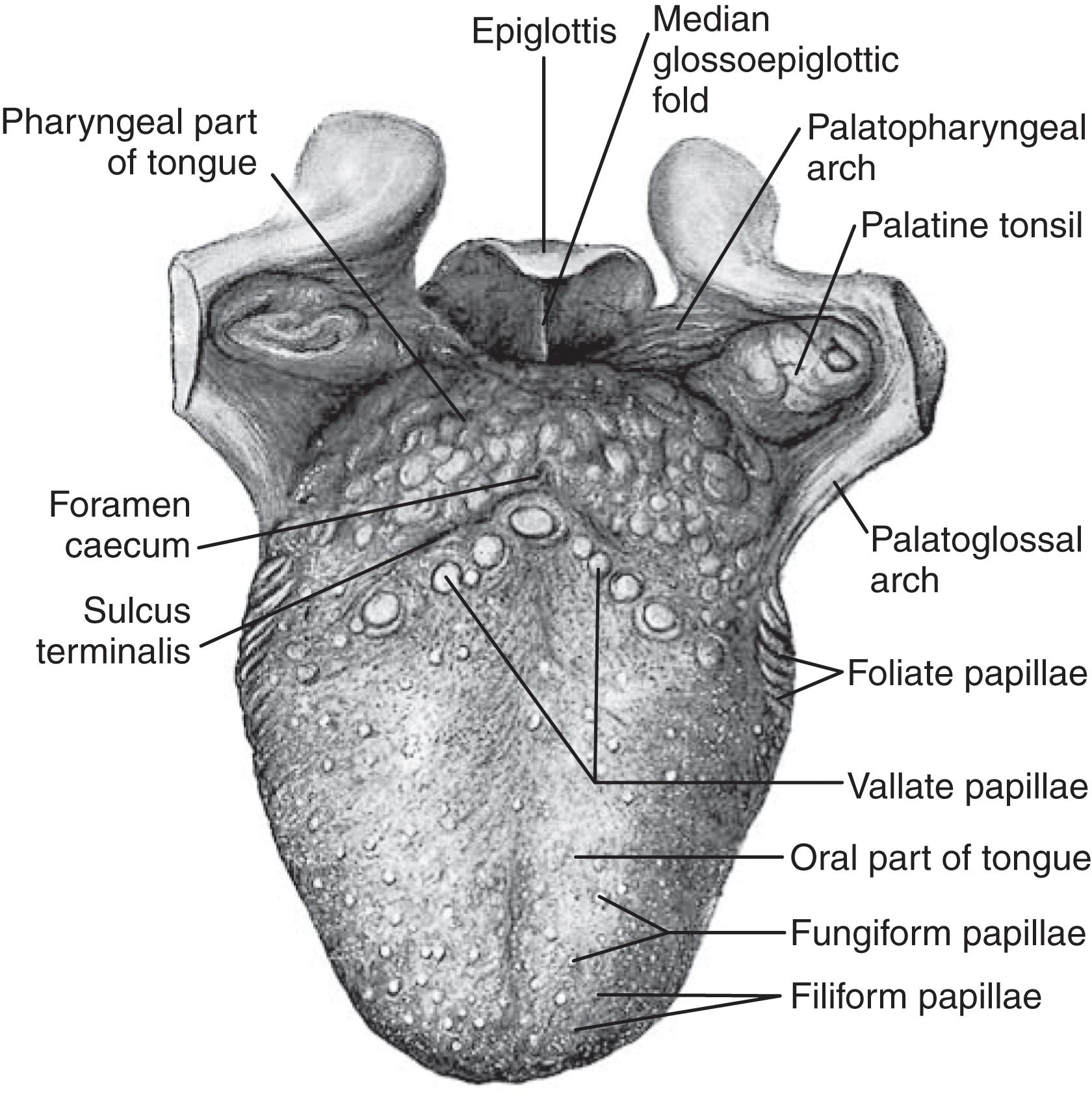
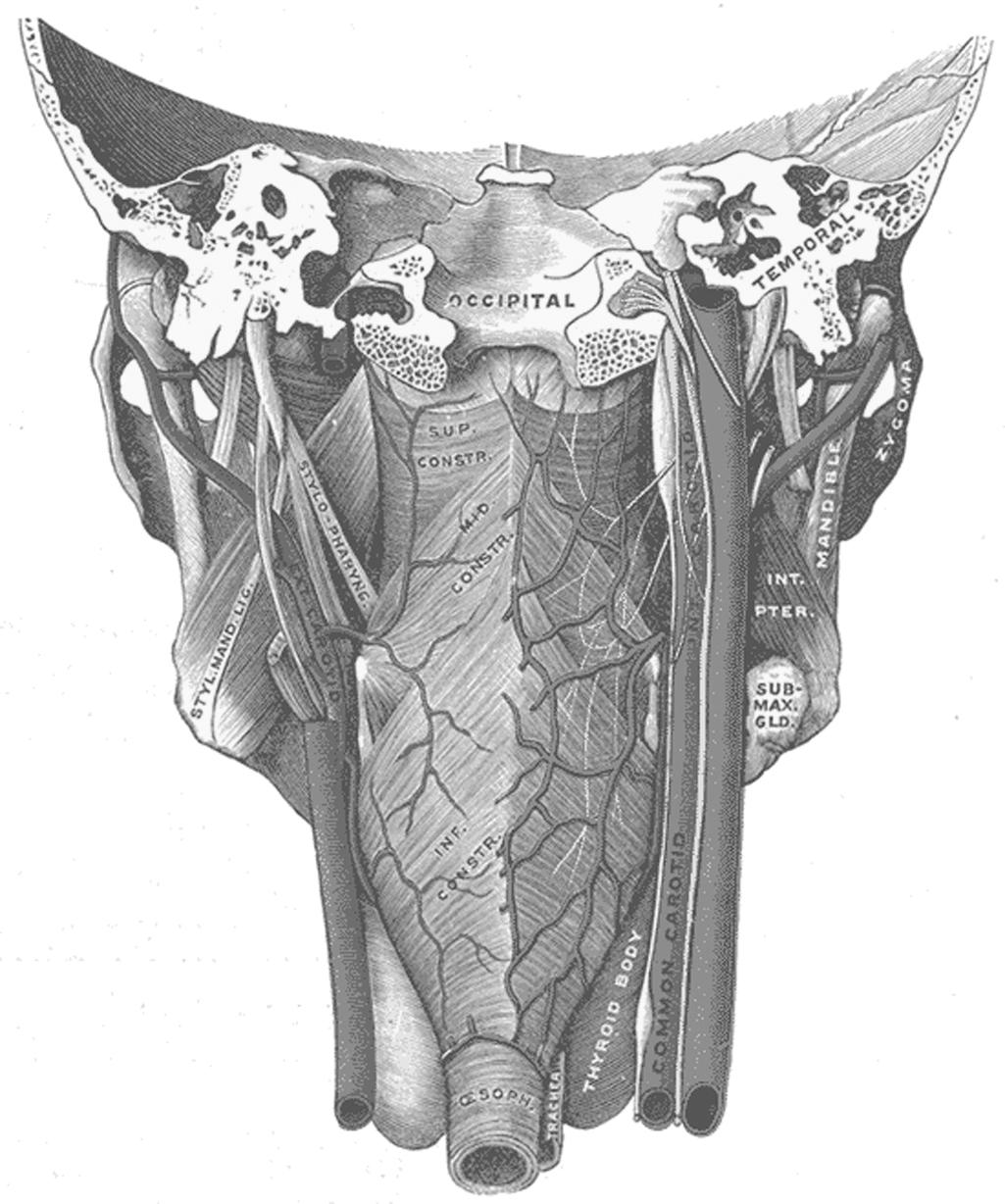
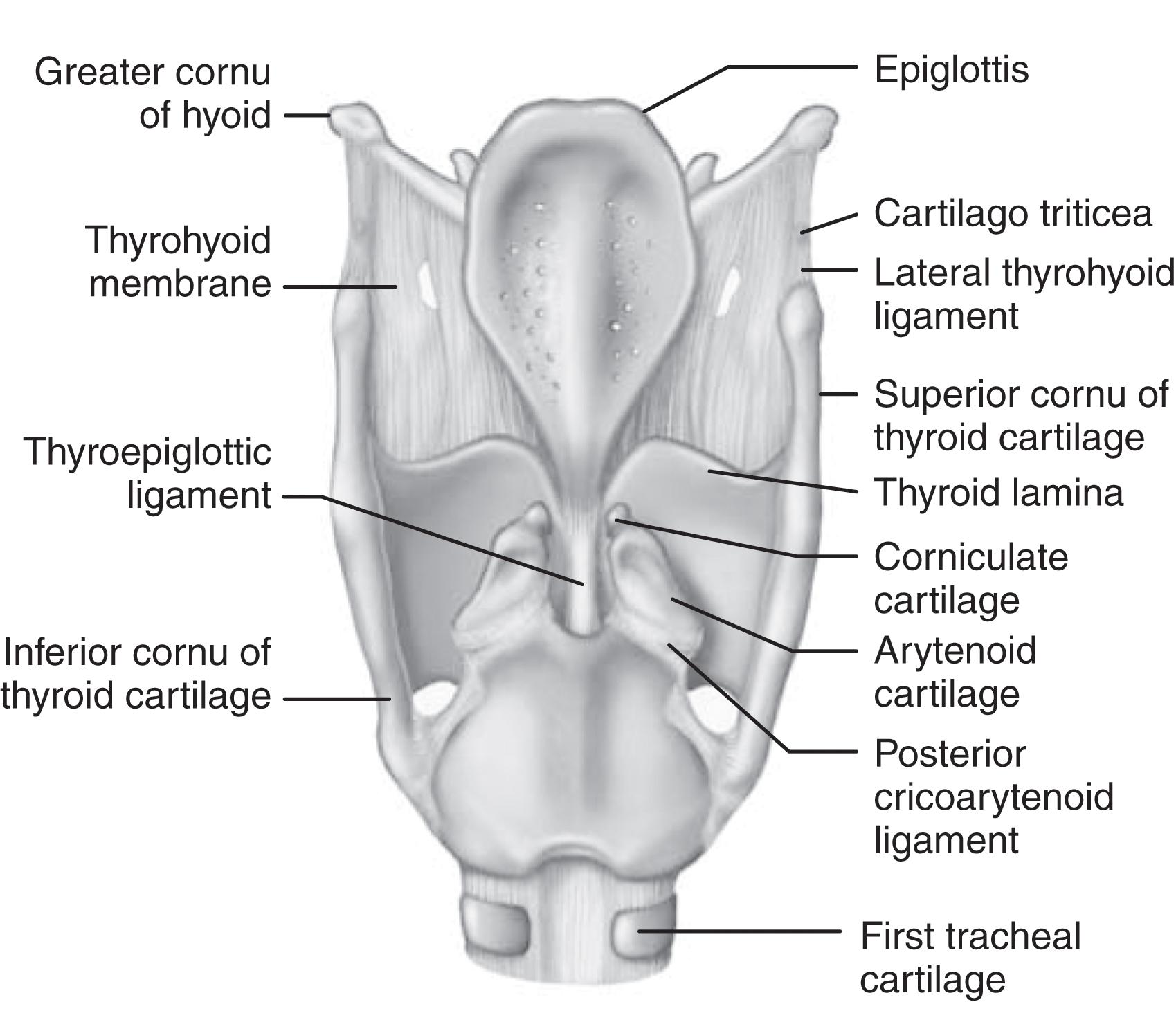
Isolated blunt pharyngeal injury is exceedingly rare. It is more often associated with concomitant cervical facial trauma. Penetrating pharyngeal injury occurs more commonly in the pediatric population from lacerations caused by intraoral foreign bodies.
Pharyngeal trauma may occur from foreign body ingestion, blunt or penetrating trauma, or following laryngoscopy or other endoscopic procedures.
The initial clinical scenario varies. Patients with nonlethal injuries commonly present with dysphagia and odynophagia. Patients with more severe injuries may present with aphonia, dyspnea, hemoptysis, and severe acute respiratory failure that may rapidly lead to asphyxia if not treated. Injuries to the esophagus and pharynx are difficult to diagnose and may be missed during the management of other immediate life-threatening injuries. Oral bleeding, drooling, and subcutaneous emphysema all suggest upper digestive tract or airway injury. When possible, careful examination of the oropharynx and hypopharynx should be performed at the bedside.
Lateral views of the neck and cervical computed tomography (CT) scan may identify soft tissue air ( Figs. 5 and 6 ). A nonionic contrast-enhanced esophagogram or esophagoscopy is indicated if injury is clinically suspected. Contrast material leak may be revealed on esophagogram (see Fig. 5 ).
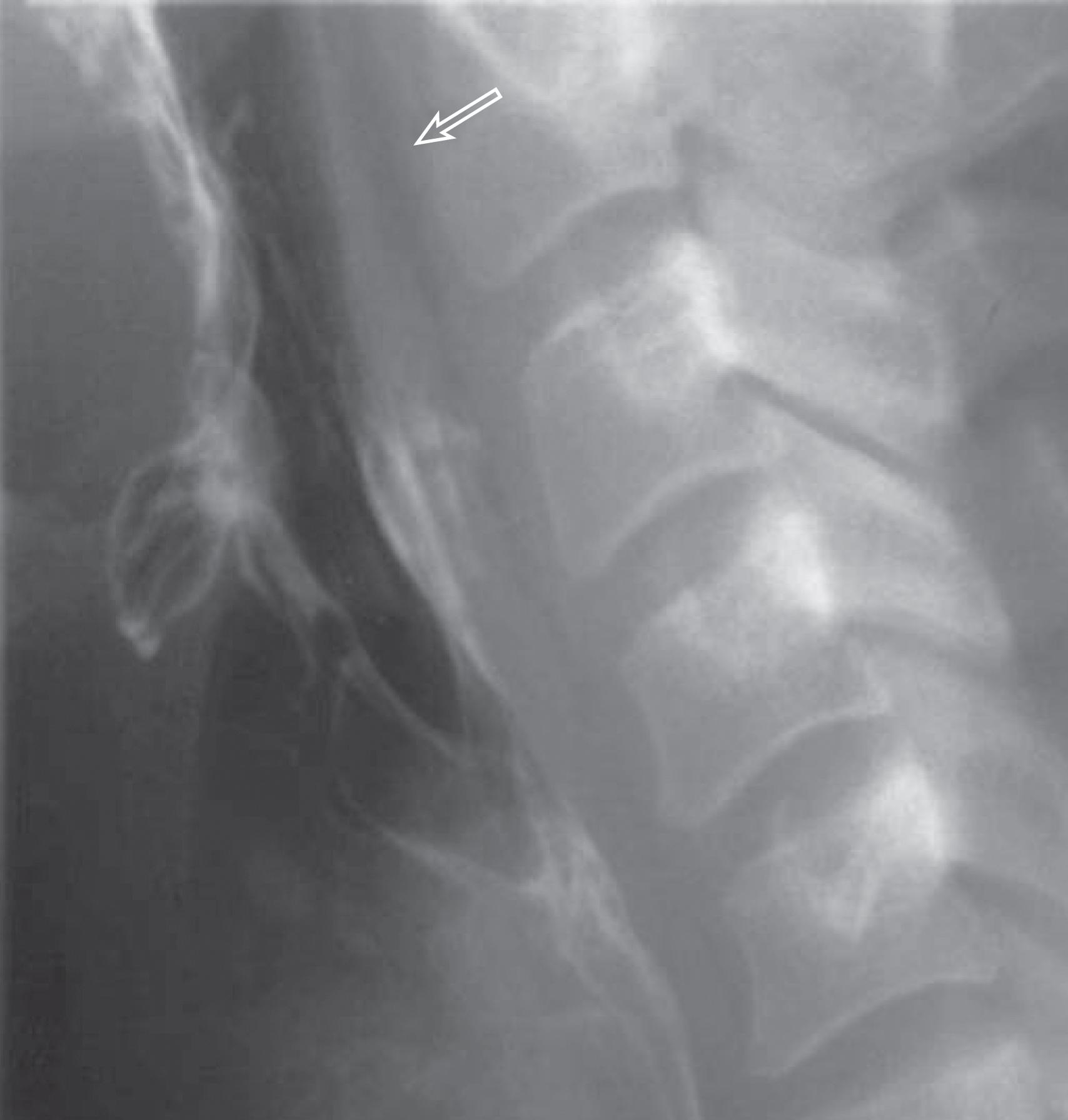
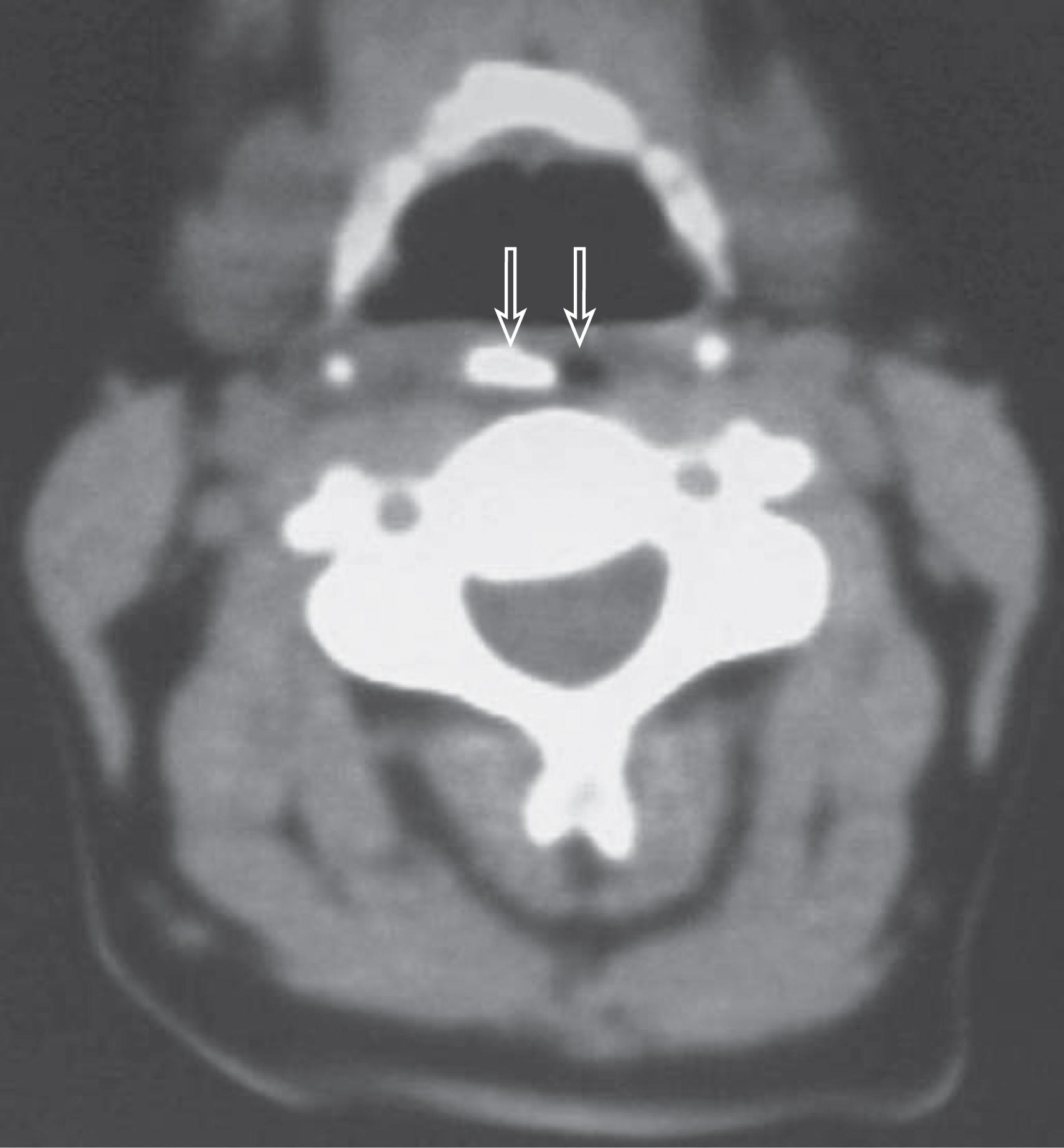
The larynx is a functional “valve” separating the trachea from the upper aerodigestive tract. It is primarily an organ of communication (the voice box), but also serves as an important regulator of respiration. The larynx is necessary for effective coughing and for creating Valsalva maneuvers. The larynx also prevents aspiration during swallowing.
The larynx is composed of the following elements:
Skeleton ( Fig. 7 )
Hyoid bone: Attaches to epiglottis and strap muscles.
Thyroid cartilage: Anterior attachment of vocal folds. Posterior articulation with cricoid cartilage.
Cricoid cartilage: Complete ring. Articulates with thyroid and arytenoid cartilages.
Arytenoids: Two cartilages that glide along the posterior cricoid and attach to posterior ends of vocal folds.
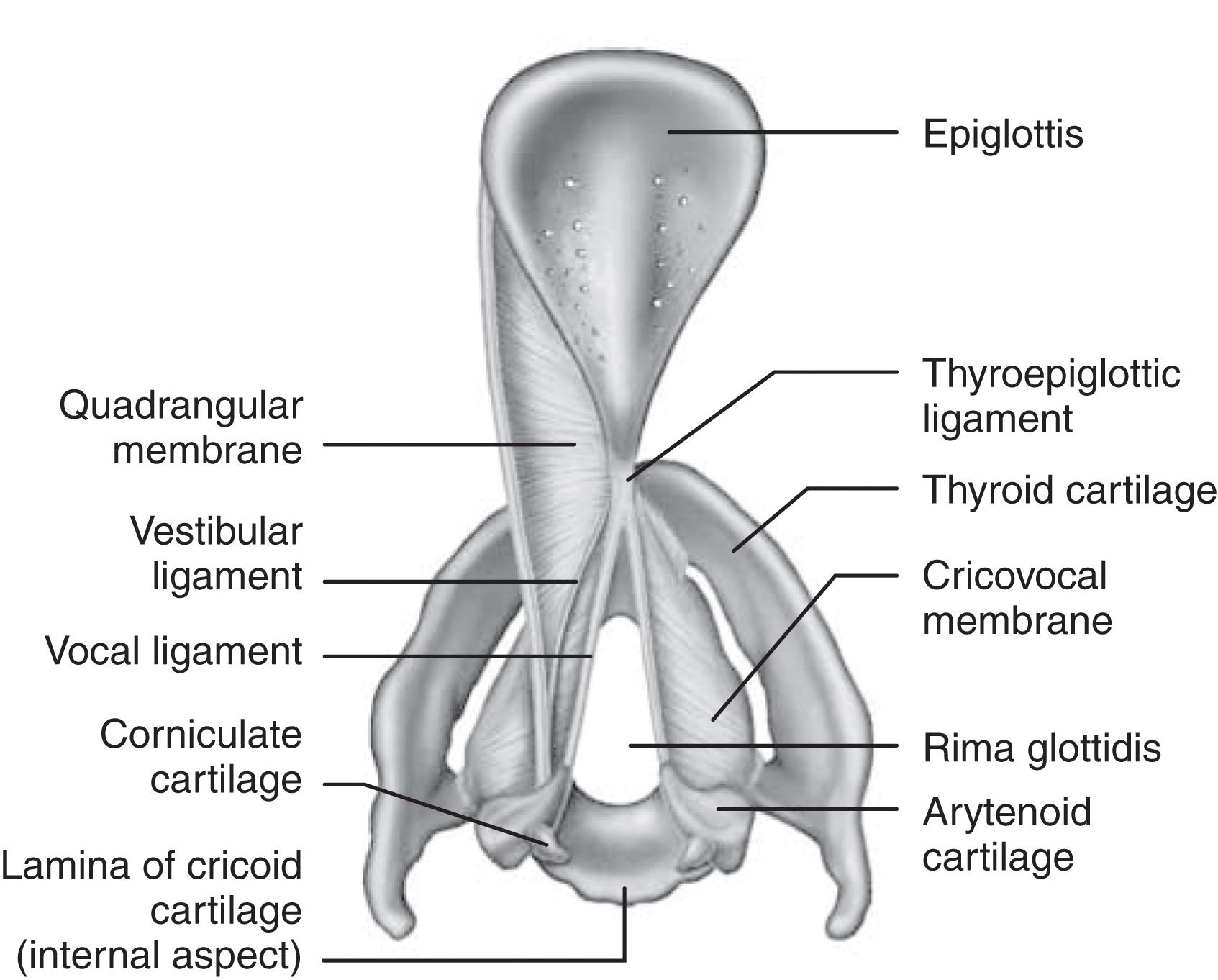
Divisions
Supraglottis: Usually covered with respiratory epithelium containing mucous glands.
Epiglottis: Leaf-shaped mucosal-covered cartilage, which projects over larynx.
Aryepiglottic folds: Extend from the lateral epiglottis to the arytenoids.
False vocal cords: Mucosal folds superior to the true glottis. Separated from true vocal folds by the ventricle.
Ventricle: Mucosa-lined sac, variable in size, which separates the supraglottis from the glottis.
Glottis: The true vocal folds attach to the thyroid cartilage at the anterior commissure. The posterior commissure is mobile, as the vocal folds attach to the arytenoids. Motion of the arytenoids effects abduction or adduction of the larynx. The bulk of the vocal fold is made up of muscle covered by mucosa. The free edge is characterized by stratified squamous epithelium. The vocal folds abduct for inspiration and adduct for phonation, cough, and Valsalva maneuver.
Subglottis: Below the vocal folds, extending to the inferior border of the cricoid cartilage.
Innervation—branches of the vagus nerve
Superior laryngeal nerve: Sensation of the glottis and supraglottis. Motor fibers to the cricothyroid muscle, which tenses the vocal folds. This nerve leaves the vagus high in the neck.
Recurrent laryngeal nerve: Sensation of the subglottis and motor fibers to intrinsic muscles of the larynx. This nerve branches from the vagus in the mediastinum, then turns back up into the neck. On the right, it travels inferior to the subclavian artery and on the left, the aorta.
Become a Clinical Tree membership for Full access and enjoy Unlimited articles
If you are a member. Log in here